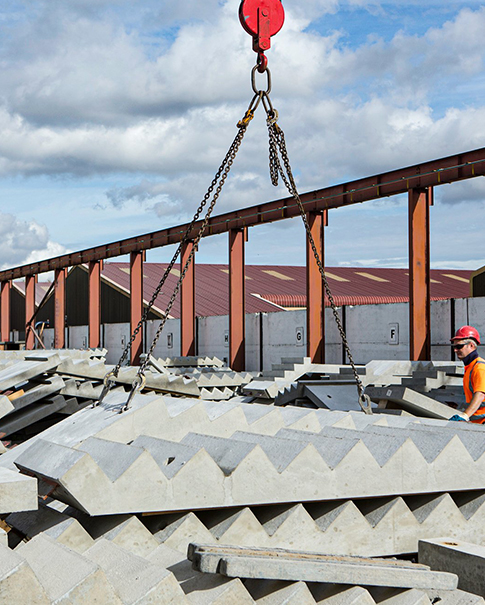-

ส่งอีเมลถึงเรา
sale@lscmagnetics.com -

เบอร์ติดต่อ
+86 -13559234186

ส่งอีเมลถึงเรา
sale@lscmagnetics.com
เบอร์ติดต่อ
+86 -13559234186
แม่เหล็กมีอยู่ในทุกแง่มุมของชีวิตเรา ตั้งแต่แม่เหล็กติดตู้เย็นไปจนถึงมอเตอร์ขับเคลื่อนรถยนต์ไฟฟ้า ตั้งแต่เครื่อง MRI ทางการแพทย์ไปจนถึงกังหันลม แต่คุณรู้หรือไม่ว่าความผันผวนของอุณหภูมิเพียงเล็กน้อยสามารถเปลี่ยนแปลงคุณสมบัติของแม่เหล็กได้อย่างมาก ความสัมพันธ์ระหว่างอุณหภูมิและแม่เหล็กคือการต่อสู้อันยาวนานระหว่างความเป็นระเบียบและความโกลาหลในโลกจุลภาค

ทำไมแม่เหล็กถึงไวต่ออุณหภูมิมาก?
แม่เหล็กมีสมบัติแม่เหล็กเนื่องจากมีอิเล็กตรอนที่ไม่จับคู่กันในโครงสร้างอะตอมภายใน ภายใต้สภาวะบางอย่าง โมเมนต์แม่เหล็กของอิเล็กตรอนเหล่านี้จะเรียงตัวกันเพื่อสร้างโครงสร้างโดเมนแม่เหล็กที่เป็นระเบียบ ซึ่งทำให้แม่เหล็กมีสมบัติแม่เหล็กมหภาค เมื่ออุณหภูมิเปลี่ยนแปลง โครงสร้างจุลภาคเหล่านี้ก็จะเปลี่ยนแปลงไปด้วย ซึ่งจะส่งผลต่อประสิทธิภาพของแม่เหล็ก
ประการแรก อุณหภูมิสูงเป็น "ตัวรบกวน" แม่เหล็ก
เมื่อแม่เหล็กถูกสัมผัสกับอุณหภูมิสูง ระเบียบภายในจะค่อยๆ สลายตัว:
การลดอำนาจแม่เหล็กแบบค่อยเป็นค่อยไป
การเพิ่มขึ้นของอุณหภูมิทำให้อะตอมในแม่เหล็กสั่นสะเทือนอย่างรุนแรง โดเมนแม่เหล็กเริ่มมีการจัดเรียงอย่างไม่เป็นระเบียบ และแม่เหล็กจะค่อยๆ อ่อนลง12
แม่เหล็กนีโอไดเมียมทั่วไปจะเริ่มประสบกับการสูญเสียแม่เหล็กแบบกลับได้เมื่อเกิน 80°C (ความแข็งแรงจะสูญเสียไปประมาณ 0.11% สำหรับทุกๆ การเพิ่มขึ้น 1°C)
ความเสียหายที่ไม่สามารถย้อนกลับได้
หากอุณหภูมิสูงกว่าอุณหภูมิการทำงานมากแต่ต่ำกว่าจุดคูรี อาจทำให้เกิดการสูญเสียที่ไม่สามารถย้อนกลับได้ (จำเป็นต้องมีการสร้างแม่เหล็กใหม่เพื่อการกู้คืน)
หากอุณหภูมิคูรีสูงเกิน จะทำให้เกิดการสูญเสียแม่เหล็กถาวร และไม่สามารถคืนสภาพแม่เหล็กได้แม้จะเย็นลงแล้วก็ตาม
ในทางกลับกัน อุณหภูมิต่ำมีผลดีต่อแม่เหล็กมากกว่า
(i) พลังแม่เหล็กที่เพิ่มขึ้น
สภาพแวดล้อมที่อุณหภูมิต่ำมักจะเสริมพลังแม่เหล็กของแม่เหล็กเมื่อเทียบกับอุณหภูมิสูง เนื่องจากการเคลื่อนที่ด้วยความร้อนของอะตอมจะอ่อนลงที่อุณหภูมิต่ำ โครงสร้างโดเมนแม่เหล็กมีเสถียรภาพมากขึ้น และการจัดเรียงโมเมนต์แม่เหล็กจะเป็นระเบียบมากขึ้น ตัวอย่างเช่น ในอุปกรณ์ทดลองอุณหภูมิต่ำบางชนิด เมื่อใช้แม่เหล็ก พบว่าพลังแม่เหล็กของแม่เหล็กมีความแข็งแรงมากกว่าที่อุณหภูมิห้อง ปรากฏการณ์นี้เห็นได้ชัดเจนเป็นพิเศษในวัสดุแม่เหล็กชนิดพิเศษบางชนิด เช่น แม่เหล็กถาวรหายากบางชนิดที่สามารถรักษาคุณสมบัติแม่เหล็กสูงได้ที่อุณหภูมิต่ำ
(ii) ความเปราะบางของวัสดุเพิ่มขึ้น
แม้ว่าอุณหภูมิต่ำจะช่วยเพิ่มคุณสมบัติแม่เหล็กของแม่เหล็กได้ แต่ก็ส่งผลเสียต่อคุณสมบัติทางกายภาพของแม่เหล็กด้วยเช่นกัน ที่อุณหภูมิต่ำ วัสดุแม่เหล็กจะเปราะและแตกหักง่าย เนื่องจากอุณหภูมิต่ำจะเพิ่มแรงระหว่างโมเลกุลของวัสดุ ขณะเดียวกันการเคลื่อนที่ด้วยความร้อนของอะตอมจะอ่อนลง ส่งผลให้ความเหนียวของวัสดุลดลง
(iii) เสถียรภาพที่เพิ่มขึ้นของโครงสร้างโดเมนแม่เหล็ก
ในสภาพแวดล้อมอุณหภูมิต่ำ โครงสร้างโดเมนแม่เหล็กภายในแม่เหล็กจะมีเสถียรภาพมากขึ้น เนื่องจากการเคลื่อนที่ของอะตอมด้วยความร้อนจะอ่อนลงที่อุณหภูมิต่ำ การจัดเรียงของโดเมนแม่เหล็กจะเป็นระเบียบมากขึ้น และทิศทางของโมเมนต์แม่เหล็กจะสม่ำเสมอมากขึ้น โครงสร้างโดเมนแม่เหล็กที่มีเสถียรภาพนี้ช่วยให้แม่เหล็กสามารถรักษาระดับแม่เหล็กให้แข็งแกร่งได้ที่อุณหภูมิต่ำ ขณะเดียวกันก็ช่วยลดการเปลี่ยนแปลงที่ไม่เป็นระเบียบในโครงสร้างโดเมนแม่เหล็ก
ในที่สุด วัสดุแม่เหล็กต่างชนิดกันจะตอบสนองต่ออุณหภูมิแตกต่างกันมากเนื่องจากองค์ประกอบและโครงสร้างที่แตกต่างกัน:
| ประเภทแม่เหล็ก | อุณหภูมิการทำงานสูงสุด | อุณหภูมิคูรี | ขีดจำกัดอุณหภูมิต่ำ (อุณหภูมิการทำงานขั้นต่ำ) | คุณสมบัติ |
| แม่เหล็กนีโอไดเมียม | 80–230℃※ | 310–400℃ | –138℃ | คุณสมบัติแม่เหล็กที่แข็งแกร่งที่สุดที่อุณหภูมิห้อง แต่มีเสถียรภาพต่ำที่อุณหภูมิสูง |
| แม่เหล็กซาแมเรียมโคบอลต์ | 350℃ | 700–800℃ | <–200℃ (ใกล้ศูนย์สัมบูรณ์) | ประสิทธิภาพการทำงานที่สมดุลทั้งอุณหภูมิสูงและต่ำ ทนทานต่อการกัดกร่อน |
| แม่เหล็กอัลนิโค | 525℃ | 700–860℃ | –75℃ | ประสิทธิภาพการทำงานที่อุณหภูมิสูงที่ดีที่สุด ความสามารถในการป้องกันการล้างสนามแม่เหล็กที่อ่อนแอ |
| เฟอร์ไรต์ | 180℃ | 450℃ | –40℃ | ง่ายต่อการล้างแม่เหล็กที่อุณหภูมิต่ำ ราคาถูก ทนทานต่อการเกิดออกซิเดชัน |